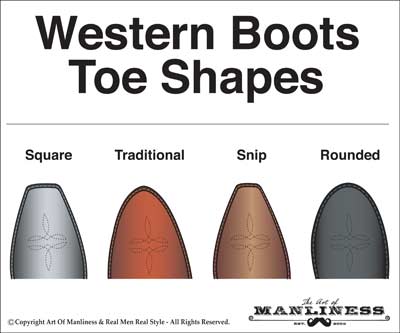The Western-style riding boot is somewhere between folk art, pop culture, and functional clothing.
Actors have worn them, and so have Presidents — and for that matter, so have actors who became Presidents.
Most men, though, will go through life without ever having tried a cowboy boot on.
My advice? Don’t be that guy. Give it a shot. You don’t have to be a cowboy to wear and appreciate Western boots.
Although you’ll get more use out of them if you take up Western dancing and rodeo — a man can enjoy a touch of Western style in his outfits now and again.
Just like boater shoes aren’t exclusively for New Englanders with their own private yachts, well-dressed men can be comfortable taking the cowboy boot out of the Southwest and into America’s most fashionable cities.
How to do it? Well that’s the purpose of this cowboy boot primer.
Why Western Boots?
For most men, it’s hard to see the point of a fancy Western boot. They’re expensive items, and unless you grew up around men who wore them, they seem more like novelty or costume pieces than anything stylish.
But a savvy dresser can think of a cowboy boot as an outfit’s holdout weapon. At a distance, it looks like a quality leather shoe. Up close, the distinct advantages start to show:
- Unique shape.

- The toe of a cowboy boot doesn’t have to be wickedly thin (although modern fashion tends that way), but it always has a distinct taper. This was originally to help slide in and out of the stirrups more easily, and it still gives your feet an active, dynamic shape that contrasts nicely with more staid dress shoe toes.
- Added height. Shorter men have extra reason to love cowboy boots — the heel adds anywhere from a half-inch to nearly two inches of height. Taller men will definitely want a lower-slung “walking heel” style, but particularly short men can sneak another inch or so in by wearing full “cowboy heels.”
- Decoration. A plain cowboy boot is a rare thing. There are styles out there for every taste imaginable, and the portion of the boot visible beneath your trouser cuffs can feature everything from leather tooling to contrast-colored stitching and bright vegetable dyes. If you’re fond of memorable footwear, you’ll love cowboy boots.
- Uniqueness. Once you get outside of Texas and the Southwest, you’re unlikely to find yourself in a room with another guy wearing Western boots. It gives people something to remember you by.
- Fun. Let’s face it, sometimes we all want to cowboy it up a little. Western boots come from a long tradition, both historical and fictional, of American independence and manhood. It’s fun to be a part of that.
Western Boot Parts & Terminology

The first-time buyer is likely to be overwhelmed by the variety of Western boots out there. But if you know some basic terms and styles, it’ll be far less intimidating.
For the most part, all good Western boots should share the same basic characteristics:
Cuban heel. This is mandatory. A boot that doesn’t have an angled, underslung heel of at least 1/2″ or more isn’t really a cowboy boot. Lower heels will be more comfortable to walk in (and are in fact called “walking heels”), while taller heels are more useful for holding your feet in the stirrups when you ride, and give shorter men a bit of an extra boost. Expect heel length to be up to 2 inches, although 1 to 1.5 is normal.
High shaft. The tops of the boots should be up to at least mid-calf. The tops are usually shaped with decorative cut-outs, but can end in a plain, round opening. A classic Western boot usually has a 10- to 14-inch shaft.
No laces. Cowboy boots are pulled on and off. They usually have small leather loops (“bootstraps”) to assist with this, but should not have laces. This also comes from the practical origins; laces could catch on a stirrup when a cowboy fell from his horse or keep him from kicking free if the boot caught, causing him to be dragged and potentially trampled.
Want more information on Western boot heels, leathers, and parts? Click here to check out my detailed infographic.



